Mumbai: The Palava flyover in Mumbai had to be shut for traffic barely seven days after its inauguration on 4 July. The arterial infrastructure in Kalyan had taken seven years to be ready. Blocks of gravel melting at the roadside, bulldozers, and JCBs are now back at work, tearing up this newly built road and relaying it with fresh asphalt. The bridge wears the badge of making it to the long list of great Indian infrastructure debacles.
Bridges are being built with sharp right-angle turns, many are falling, and highways are cutting through people’s balconies. Flyovers are folding. India is having a civil engineering crisis, unable to keep up with its infrastructure ambitions.
India’s financial capital, which is spending billions of dollars for an infrastructure uplift, has become one of the biggest examples telling everything that’s wrong with the sector. Mumbai seems to be falling apart, and at the centre of it is poor civil engineering. The Gokhale bridge in Andheri took a long time to reopen, but was misaligned. Patchwork is already underway at Atal Setu, the bridge built to last 100 years, and the National Highway 66 has been under construction since 2008, evoking protests by residents in neighbourhood towns and villages.
India is building itself from the ground up. Swanky expressways, highways, and flyovers are springing up across the country, as the Ministry of Road Transport and Highways pours thousands of crores into infrastructure. In 2024-25 alone, the capital expenditure of the Ministry of Road Transport and Highways was Rs 3.1 lakh crore—5.7 times more than the Rs 53,000 crore budget in 2013-14 on highways and bridges. But this infrastructure push hasn’t come with the quality upgrade. Currently, nearly 580 highway projects worth Rs 4 lakh crore reportedly face delays, mostly facing land acquisition issues. And fingers invariably point at India’s civil engineers, raising questions about their abilities. These engineers, who often describe themselves as nation-builders, work in a field riddled with corruption, exhausting work hours, poor pay, and minimal opportunities for career progression. Several civil engineers ThePrint spoke to described civil as the single most exploitative branch of engineering.
The L-1 contracts awarded by the government agencies further contribute toward denting the quality of India’s infrastructure. An L1 contract means that after technical qualifications have been ascertained, the government hands over the work to the lowest bidder.
The popularity of civil engineering among students is dipping too.
According to data by All India Survey of Higher Education, 6.3 lakh students were enrolled in civil engineering and affiliated courses in 2016-17. By 2021, the number dipped to 4.89 lakh – the most significant drop compared to other engineering streams.
“All of a sudden, highways have gained prominence. You see, we’re going to build 2 lakh kilometres of highways, which is a huge number. The pace of development is very fast, so perhaps the quality and quantity of our material, our expertise, our capacity, is not matching what is required. There is a gap between demand and supply,” said Manoranjan Parida, director of CRRI and President of the Indian Road Congress.
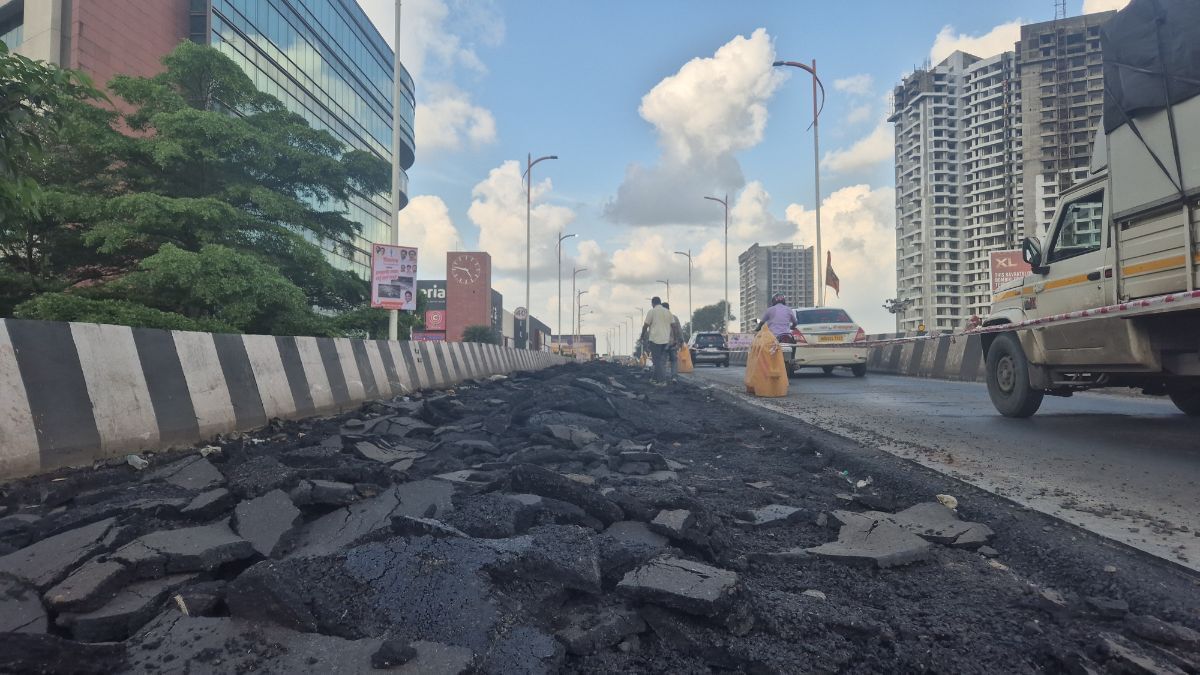
Sub tender pe Sub tender
Amit, an engineer living in Dombivali, had been waiting patiently for seven years for the Shilphata-Kalyan flyover to be ready. It would have reduced travel time between Kakinaka (Kalyan) to Navi Mumbai from two hours to just 45 minutes.
“Every day, I am stuck in hours of traffic while returning from Navi Mumbai. This bridge was doomed to fail. From day one, it has had issues,” he said.
Palava bridge’s opening turned out to be a metaphor for all that is wrong with India’s civil infrastructure projects. It was dogged by delays, a series of changing contractors and shoddy shortcuts.
After a seven-year-long wait, protests and political pressures, the bridge finally opened to an uneven, skiddy road laden with potholes within hours.
Because of public impatience, the bridge was opened without much fanfare without even a completion certificate handed over by the contractor. Flaws in the surface caused vehicles to slip and stumble. It took just one Mumbai downpour on the day of the inauguration to expose its quality.
“We had to open it prematurely under political pressure,” said an official at MSRDC on condition of anonymity.
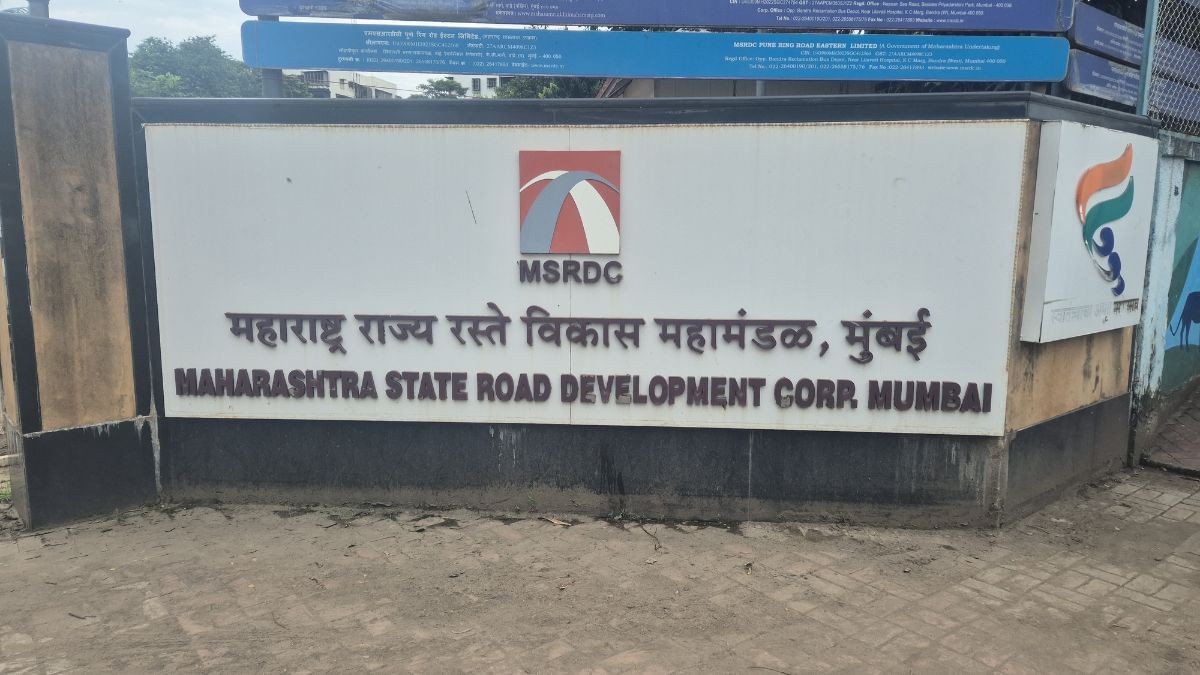
The MSRDC focuses on access control of expressways in the state. It has 55 flyover projects in Mumbai and recently built the Samruddhi Expressway, connecting Nagpur to Mumbai.
The bridge was supposed to have a mastic asphalt layer on top of it. But contractors and local residents alleged that MSRDC had done ‘leepa poti ka kaam’ (insincere, incomplete work).
“After the base coat, and prime coat, the MSRDC sprayed the road with Bitumen that caused two-wheelers to slip. The bridge was then shut off immediately. They put a layer of crust sand on the road, which just made matters worse. They had to shut the bridge within a week of inauguration,” Rahul Bagar, a contractor with years of experience, told ThePrint, standing on the bridge.
The original plan was to build two parallel flyovers, one from Shilphata to Kalyan and the other in the reverse direction. Only one flyover has been constructed. The bridge from Kalyan to Shilphata is still under construction, its rusting pillars dotting the way. Seven years have passed, but land acquisition is yet to be completed.
The work order for the bridge was given in 2018 and revised in 2020. It was to be built by Ram Kirpal Constructions. The company was the lowest bidder, and the tender floated was of Rs 197 crore.
But in years to come, the tender would bounce between different contractors, local leaders in the area alleged. Currently, it is Eagle Constructions that is relaying the road, according to the engineer on the ground that ThePrint spoke to.
“The world-famous Palava bridge has really made a name for itself,” said Dipesh Mhatre, former corporator and member of Shiv Sena (UBT), sitting in his office near the bridge.
The bridge has become a stage to score political points. The Shiv Sena UBT, has put up posters claiming the party “forced” Maharashtra State Road Development Corporation Ltd (MSRDC) to redo the work here.
“Powerful Blow cast, all potholes disappeared!” read a poster pasted at the top of the bridge.
ThePrint went to the office of Chief Engineer SK Suravanse to discuss the details of the project. But he declined to meet. OSD Hemant Jagtape declined to comment on the bridge.
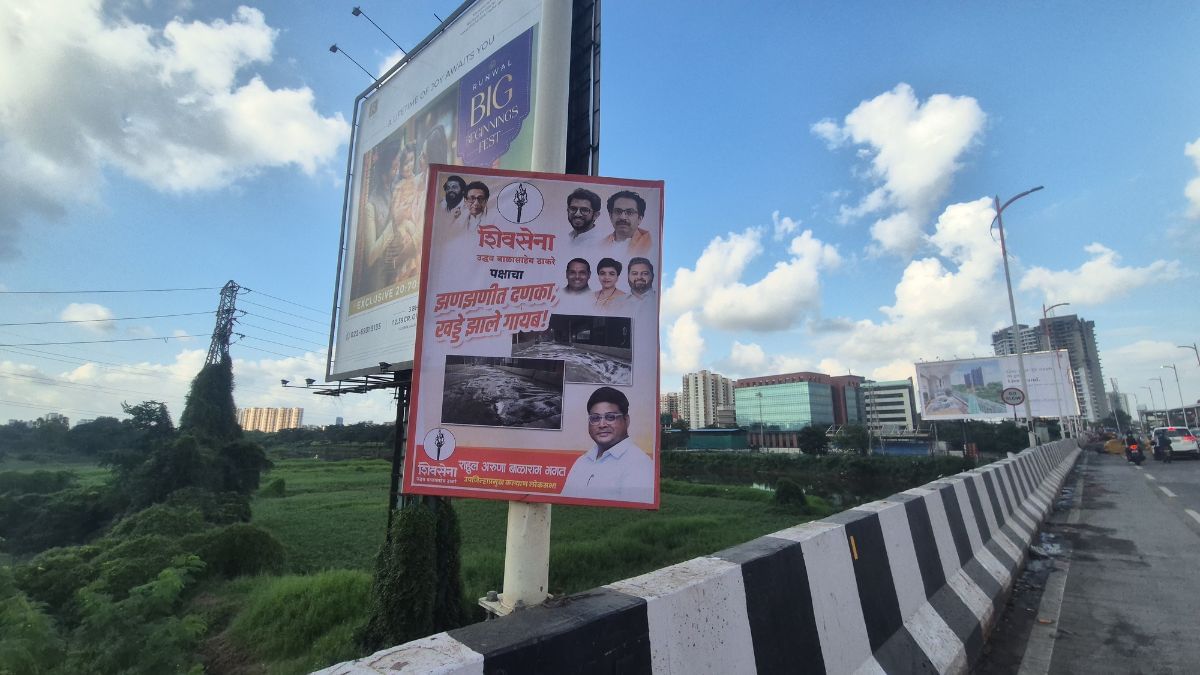
Also read: A cough syrup’s trail of death, Kanchipuram to Chhindwara. ‘Son’s life cost Rs 30’
A Mumbai-wide problem
The fate of the Gokhale Bridge in Andheri—an important Railway overbridge to connect Andheri East and West—amply captures the culture of negligence that has seeped into India’s infrastructure ecosystem. Even deaths and delays don’t shake up the system.
The Gokhale Bridge collapsed in 2018 killing two people. When it was re-built and opened for traffic seven years later, Andheri residents cheered and celebrated. Public memory is short. That cheer didn’t last long. The new structure was useless– it was misaligned by 6.6 ft with its connecting flyover, the Barfiwala flyover. It sparked a meme fest online. Amul weighed in with a cheesy ad– ‘Pull ko push nahi kiya’? (wordplay on pull and push. In Hindi, flyovers are called ‘pull).
The Gokhale bridge debacle also highlights jurisdictional challenges arising out of a culture where agencies work in silos.
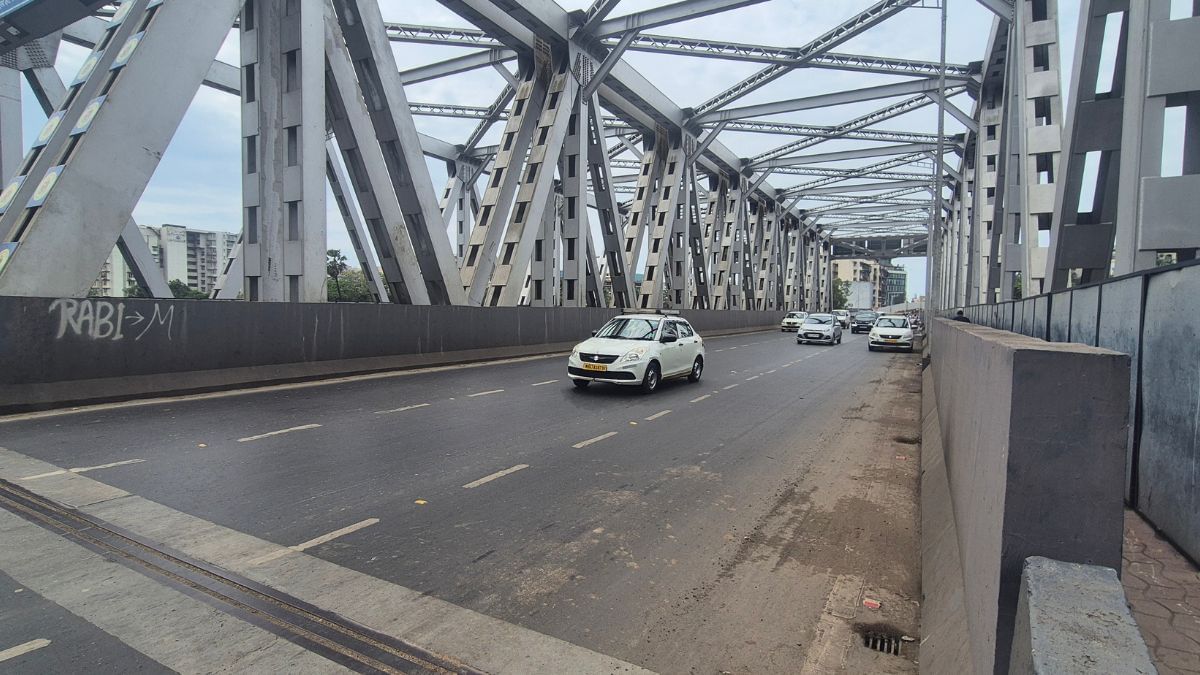
“The project was handed over to us (BMC) by MSRDC, that is where we received all initial drawings and designs from. But the actual preliminary work was done by the PWD, who didn’t have the initial designs,” BMC commissioner (projects) Abhijit Bangar told ThePrint, explaining the calculation error.
It’s not just the Gokhale and Palava bridges that have fallen into infamy. Infrastructure projects across Mumbai are exposing quality concerns in construction. From the under-construction metro lines, to the newly-opened coastal road, Atal Setu connecting Mumbai and Navi Mumbai, and a slew of flyovers across the city, roads are being repaved with concrete, and older buildings are under redevelopment.
Mumbai is receiving a facelift, and it is projected to spend $25 billion over the next five years. Amid the infrastructure push, and without elected representatives, the BMC’s fixed deposits have dropped by Rs 12,000 crore in four years, according to a RTI filed by Godfrey Pimenta, advocate and founder of the Watchdog Foundation.
Maharashtra has a contractor syndicate, limited 5-10 contractors get work, in different names, so the road infrastructure is bad. Not just citizens but Maharashtra has to suffer financially.
—Dipesh Mhatre, former corporator and member, Shiv Sena (UBT)
Major issues have been reported from crucial projects, under the jurisdiction of various agencies—from BMC to MSRDC to NHAI.
At the Vikhroli flyover, the BMC seems to have forgotten to put in drains, and its approach roads are choked. The flagship project of Atal Setu already has a bad patch where potholes have emerged. The contractor has been fined Rs 1 crore for the flaws.
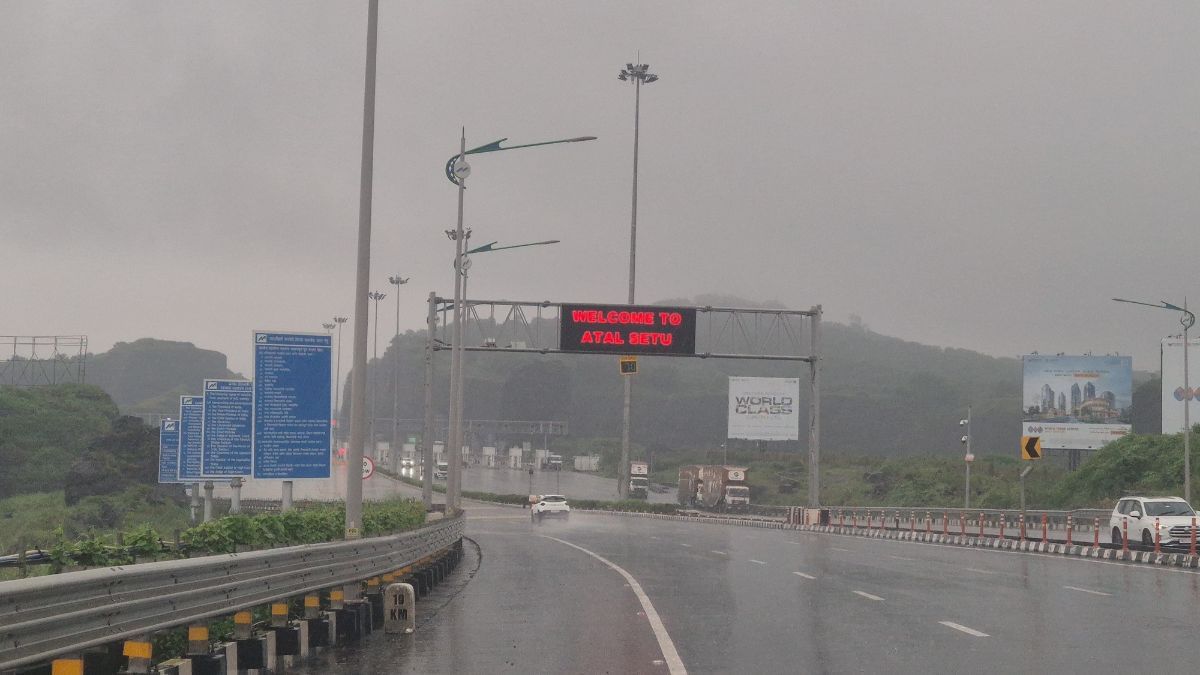
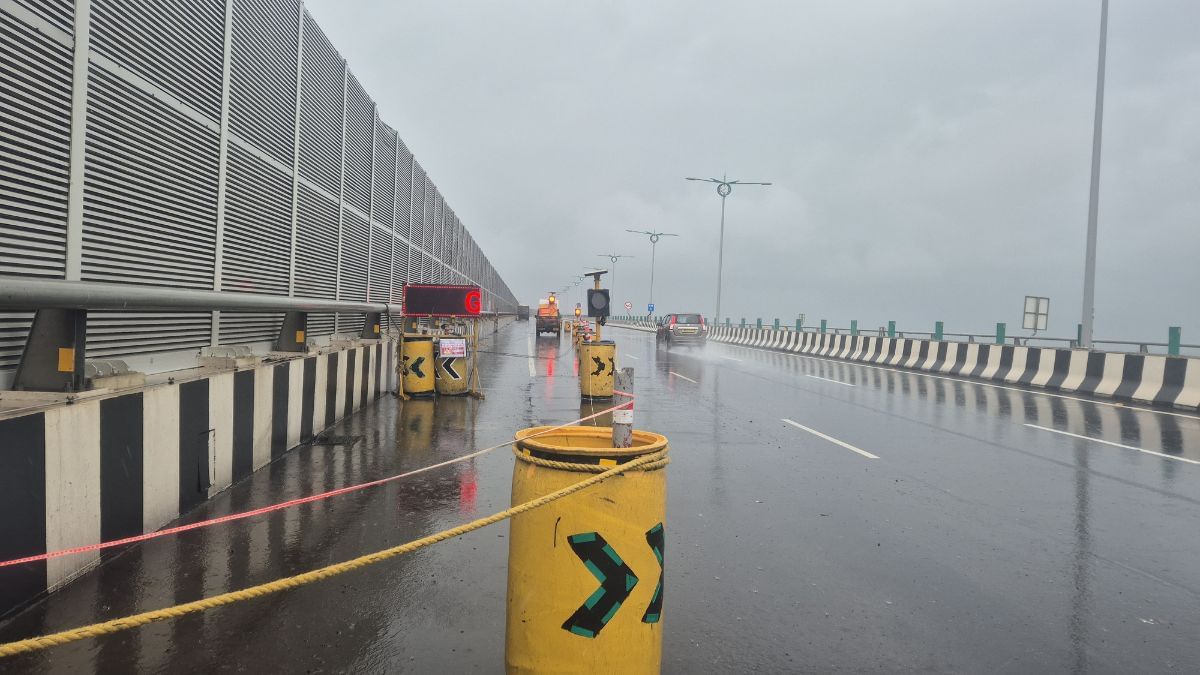
Also read: Delhi elderly have a lift problem. And they are fighting neighbours in RWA groups, courts
Squeezing in profits
From local projects such as the Palava bridge, to a mammoth infrastructure — the Atal Bridge that seeks to re-imagine how India looks like — the quality quagmire seems permanent. They have dented the trust in government builders. And a common thread binds together bridge collapses from Bihar to Bombay. Corruption, cuts and confusion.
A Pune-based engineer, who works as project engineer in infrastructure works, said that in their attempt to outbid all competition, contractors come up with the lowest bids. This naturally brings a pricing pressure that becomes even steep when the cuts at every level are factored in. Compromising on quality then becomes a means to meet costs.
“The going rate for winning a contract in Maharashtra is 1 per cent for junior engineers, 1.7 per cent for senior engineers. The profit margins are generally 15-20 per cent, but so much money exchanges hands that the contractor is forced to cut costs during material procurement, hiring inadequate labourers during work,” a civil engineer based in Pune, quoted above said on the condition of anonymity.
Local contractors and politicians also question the tendering process.
“Maharashtra has a contractor syndicate, limited 5-10 contractors get work, in different names, so the road infrastructure is bad. Not just citizens but Maharashtra has to suffer financially,” said Mhatre.
Despite a seven-year delay and Rs 200 crore investment, the Palava Flyover hasn’t freed people from hour-long jams. The stretch has no toilets on the way.
There are accusations of favouritism in the allotment of bids. L&T had approached the Supreme Court earlier in 2025 against MMRDA for allotting a bid for construction of portions of the coastal road project to Megha Engineering, even though the company’s bid was significantly expensive, by Rs 3,100 crore, compared to L&T. MMRDA finally cancelled the tender in May. Megha Engineering was the second biggest buyer of electoral bonds, according to data released by the Election Commission last year.
Hemant Jagtape, OSD at MSRDC, explained the process of approving bids at the authority, one of the many spatial organisations working for infrastructure projects in Maharashtra.
The main role of the in-house engineers of MSRDC, or generally other govt bodies, he added, is one of coordination. Jagtape highlights the Public-Private Partnership model of infrastructure work.
“Authority appoints supervision consultants, project management consultants and then there are authority engineers,” he said.
Also read: Small hotels are the backbone of India’s new sex culture. And this is their daily fight
Work allotted below actual cost
Chaitanya Usha Laxman Patil, an electrical engineer and fish farmer from Maharashtra’s Raigad district is the most recognisable person on the NH-66 highway—a stretch that starts from Panvel and goes all the way to Kanyakumari, covering 1,026 km, and connecting villages by the western ghat.
Laxman has been walking between Raigad and Goa—a distance of 500 km—to map out all the potholes on NH-66, where construction and repair is a constant.
Filling potholes near his village and helping accident victims is something Patil has been doing since he was a teenager. Government apathy toward road safety gradually pushed him toward creating content on local issues.
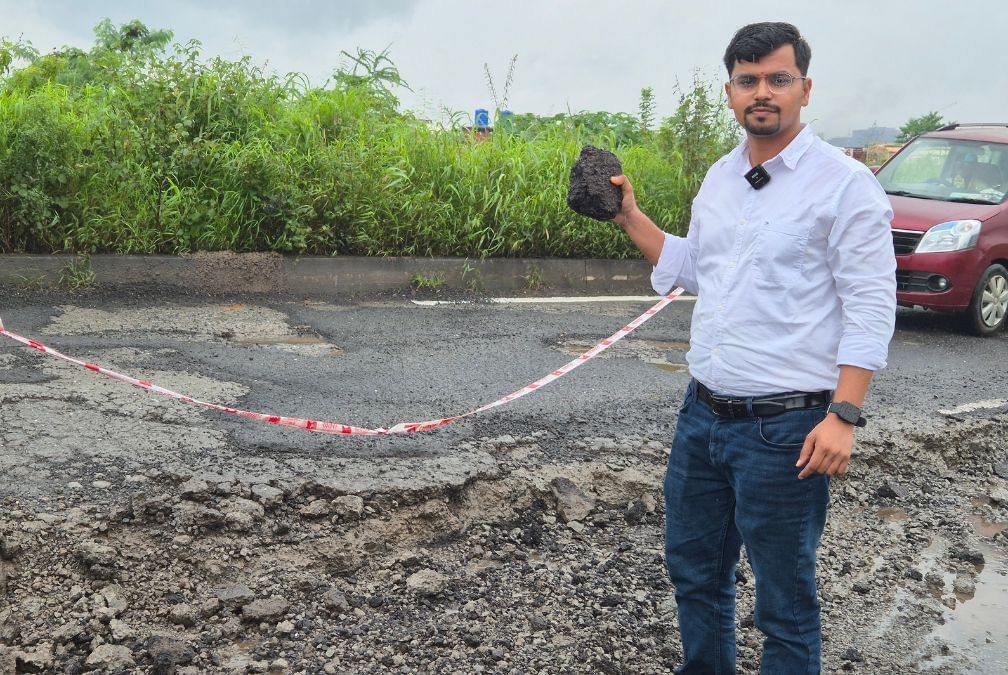
Currently, six-laning of NH-66 is underway, with workers rushing as the December 2025 deadline approaches. That deadline will be missed, as evident by the work currently underway on the road. The work is divided into 24 civil packages, as told to Parliament in 2021.
And from Karnataka to Kerala to Maharashtra, residents have constantly complained about the state of work on the highway.
It is the work on the Mumbai-Goa highway that has breached deadlines. Repeated assurances of its completion have been given. It was to be completed by December 2023 earlier.
Laxman regularly posts videos in Marathi about dangerous potholes and cracks on this highway. And he is often stopped by commuters who cheer him, shake hands with him and give a thumbs up to the work he’s doing.
The 30-year-old walks around like a guardian of the road. A tall man with a teeka on his forehead, he talks with villagers and passersby with an ease.
“You’re doing terrific work. This corruption needs to be exposed,” a commuter told him, stopping him by the side of the road. Other drivers cheered him on and clapped as they drove past him recording a video by the side of a massive pothole.
The NH-66 looks like the biggest enemy of car suspension. A drive through it can ensure the vehicle gets a service centre visit.
“My back hurts all the time, I face frequent tyre punctures, and it takes so much time to travel from place A to B,” Ramesh, an auto driver on the highway, headed to Khopoli, told ThePrint.
Currently, the concretisation of the highway is underway to ensure better quality of roads, but fresh cracks have appeared even on these newly done patches.
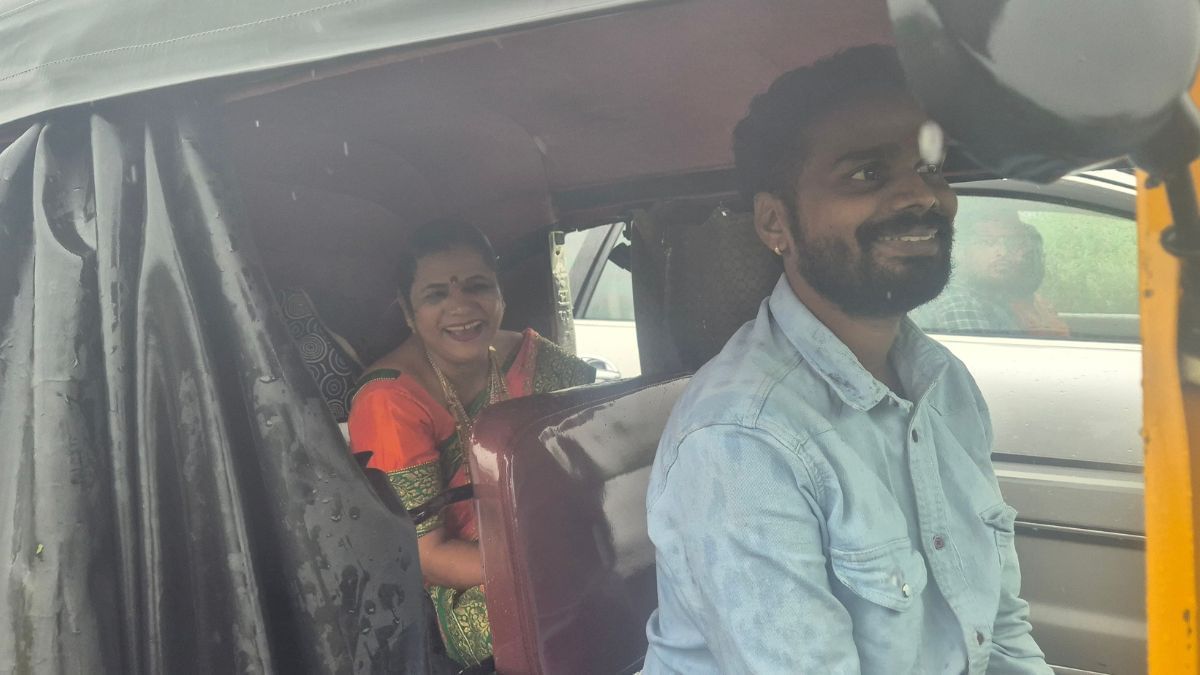
A section of this project in Kerala at Kooriyad in Mallapuram had completely collapsed in May 2025, damaging cars 30 ft under.
A 600-kilometre stretch of NH66, that mainly lies in Kerala, is being designed with a 45-ft right of way, while IRC guidelines prescribe a minimum 60-ft right of way. The right of way is basically the width of the road.
An expert committee in 2025 looked at the road caving in incident in Kerala, and found that a ‘combination of factors’ may have led to it: “Inadequacies in the geotechnical investigation, a tendency to follow the geotechnical report recommendations without critical scrutiny, lack of proper engineering judgment in selecting shear strength parameters for foundation strata, and possible mismatch between the soil replacement depth considered in the RE wall design and what was actually executed at site.”
The finding was disclosed to the Public Accounts Committee in August 2025. The PAC also noted that sub-contracting of work makes it difficult to hold contractors accountable. According to NHAI guidelines, more than five per cent of sub-contract work can be done only with approval from the authority (in this case, NHAI). The committee also noted that sanctioned costs of tenders tend to be lower than actual cost. It noted that the project from Kadambattukonam to Kazhakuttom was approved at Rs 3,684.98 crore, but the contract was awarded for just Rs 795 crore — only about 22 per cent of the approved amount.
“On average, for all 20 packages of the NH-66 project, the awarded cost is only around 54 per cent of what was sanctioned. The Committee is concerned about such a large difference, as it raises questions about whether these projects are being carried out as originally specified in the DPR and whether subcontracting at lower costs is affecting the quality and scale of the work,” the committee noted.
This holds true for Maharashtra as well. In the Panvel stretch of NH66, contracts have been awarded for less than 40 per cent of the actual cost, according to Right to Information filings received by Lakshman.
Contractors face fines and blacklisting whenever such issues arise, followed by suspensions of the engineers in charge. But this doesn’t change the larger culture.
“In such collapses, usually the small fish in the pond is targeted, and a fine is levied. That is where the accountability ends,” said a government engineer from Kerala on the condition of anonymity.
It’s not just monetary losses. According to Right to Information reports received by Laxman and reviewed by ThePrint, more than 1,069 people have died and 923 fatally injured because of poor roads on National Highway 66 between 2012 and 2024.
Also read: Baniya-branded food is finally on the table. Being Bania, Baniya Kitchen, Baneeya Sa
Bridge collapses
Hrushikesh Shellar has to travel 25 km for one-and-a-half hours on his bike in heavy traffic and take a longer route to his place of work. Earlier, he could just walk over the Indrayani River on the pedestrian-only bridge to reach the hotel where he works. The bridge, which had been deemed ‘unsafe’ by the Panchayati Raj department almost two years ago, collapsed in June due to overcrowding. Four tourists lost their lives.
The debris of the bridge is still visible in the river, a chilling reminder of the tragedy that unfolded here three months ago.
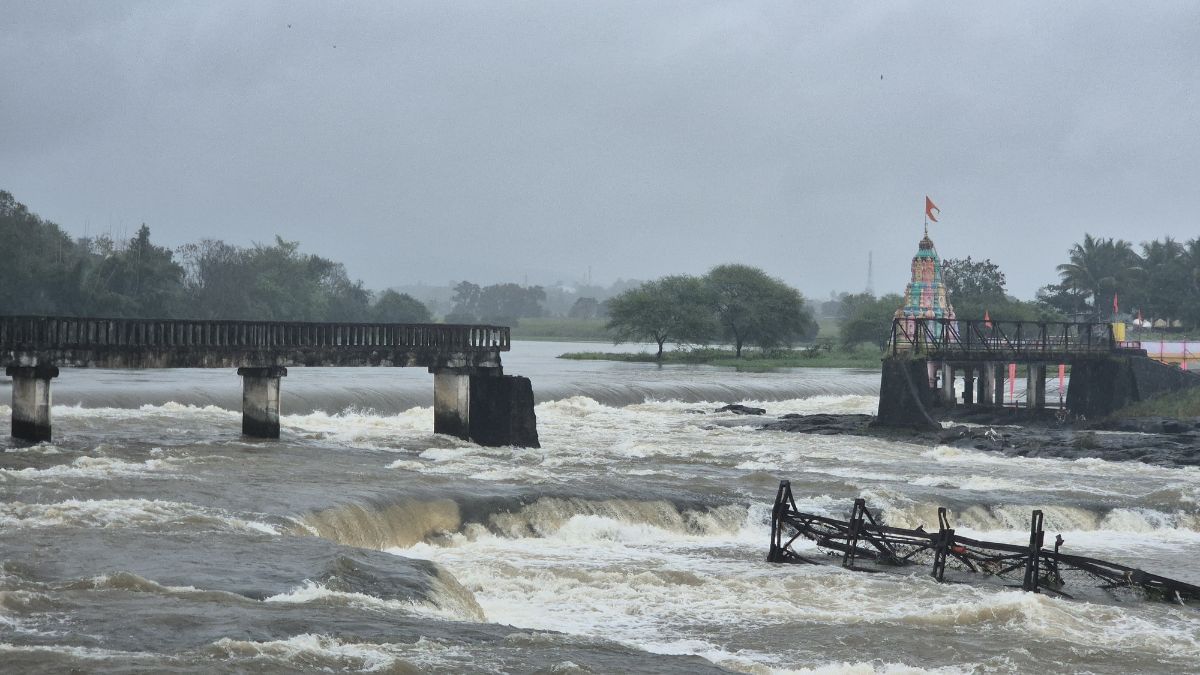
From Bihar to Gujarat to Maharashtra, bridges are collapsing all over the country like they were made of Lego. And governments are rushing to formulate policy and order audits for health checks. But only after many lives have been lost.
Recalling the day of the tragedy, Shellar said it was inevitable.
“100-150 people had squeezed on the bridge here since it was a Saturday. The crowd was overwhelming, and it was impossible for the cops stationed here to control them. The bridge was anyway unsafe.”
Rs 8 crore had been sanctioned for the construction of a new parallel bridge to replace the 30-year-old structure. But work never began.
“Engineers had come here for a survey last year,” Shellar added.
The bridge, 40 km from Pune city, was a popular tourist destination and connected two villages of the Shellar community. A running pristine river with a temple in the middle, and a resort by its banks, it had become a popular destination.
After the collapse, a state-wide audit of the health of bridges was ordered in Maharashtra. But such audits have been ordered in the past as well.
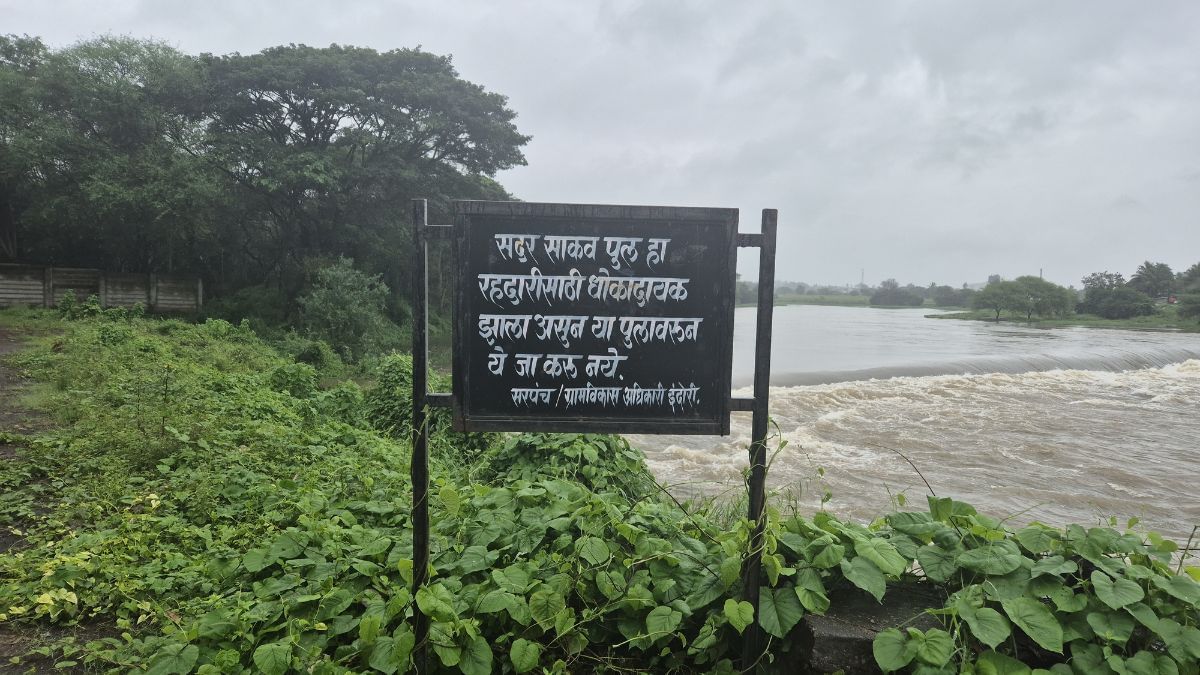
The Ministry of Road Transport and Highways reported 42 bridge collapses between 2019 and 2024.
In 2016, the collapse of a bridge over Mahad River led to the death of 42 people. The government revised guidelines for regular audit and maintenance of bridges in 2016, for the first time since 1988. It ordered inspection of bridges within one month, and mandated the audit of bridges after every monsoon, plus a structural audit of bridges that had ‘outlived’ their lifespan to identify structural defects.
In a 2020 report, Comptroller and Auditor General of India noted that 16,085 bridges existed in Maharashtra as of September 2016, of which 657 had outlived their life. Out of those, over a 100 bridges did not receive structural audit.
“There was no evidence of strategic planning for bridge development and maintenance. Construction of bridges was done as per proposals from the divisions,” the CAG had noted.
However, it is Bihar that has become the epicentre for the problem of bridge collapses. In 2025, there were incidents of 12 bridge collapses within 20 days. A ‘bridge health index’ has also been introduced. Earlier in September, a portion of a railway overbridge collapsed in Nalanda, chief minister Nitish Kumar’s home district.
Engineers ThePrint spoke to said that a majority of the bridges that collapsed in Bihar were old. Bihar didn’t have a maintenance of bridge policy till 2025, formulated after the collapse of 18 bridges within two years. Under the new policy, various departments are to issue health cards for bridges. The state has also thrown in the most fashionable buzzword of 2025 to take care of bridges–artificial intelligence.
Academics argue that the fault is not in the design, but in execution.
“The bridges are designed with the best civil engineers on board, where it falters is execution and quality of material procured,” Dr Irfan Ansari, Head of Department of Civil Engineering, Government College, Khagaria, told ThePrint.
But there are bridges with absurd designs as well. Like the Railway Over Bridge in Bhopal, which gathered national attention for its absurd design in 2025. Serious design flaws had been flagged in 2024 itself.
According to a letter by the chief project manager of the railways, seen by ThePrint, the PWD chief engineer was informed in 2024 that the inspection work was carried out on 4 April 2024. During the inspection, the engineer found that towards Barkhedi, the construction of the bridge ‘did not seem proper’.
“The bridge work (railway portion) is almost meeting at a right angle, which is neither fulfilling functional requirements nor safe for road users. It will lead to criticise (sic) amongst road users and public and also give a bad image of engineers in the public,” the letter reads.
Both the PWD and the railways blamed each other for the failure of the bridge.
An official at the PWD department, who spoke on the condition of anonymity, said that it was a lack of space that led to the design flaw, which is now being corrected. There were land acquisition issues, and proximity to a metro station that made the work more difficult.
“We’re now adding 3 ft of carriageway to make the turn easier and safer,” he told ThePrint.
Also read: Hindu group vs Miss Rishikesh contestants. “Girls fight such battles since childhood”
Civil engineers: The builders, their careers
Growing up in Bihar, Shahbaz Imam was told he had only two career options: either join the civil services or become a civil engineer. He chose the latter and lived to regret it.
“I was told I should opt for civil engineering as there are job opportunities here, or one can even move abroad for work,” he said. And this assumption isn’t unfounded. India has supplied an army of civil engineers to the world, particularly to Gulf countries that witnessed billions of dollars of oil money flowing into infrastructure building.
After graduating from IES College of Management and Technology, Bhopal, in 2019, he worked in India for five years, but couldn’t find a well-paying job. Salaries at a construction firm in Patna were repeatedly delayed, and there was no cap on work hours. During the monsoon, he wouldn’t get paid. Open civil work is generally muted in this period in India.
After working as an on-site engineer in Bhopal, where he earned a monthly salary of Rs 5,000, Imam moved to Delhi for better pay, where his earnings reached Rs 25,000 till the year 2022
“I tried really hard, but there was no growth in my career, so I finally moved to Saudi Arabia in 2022. Here, my work hours are fixed, I get a DA and earn Rs 1.2 lakh a month,” he told ThePrint. According to him, an engineer with a similar experience in India—of seven years—earns Rs40-45,000.
Career prospects for early and mid-career civil engineers are generally bleak, said a Pune-based civil engineer with eight years of experience who earns less than Rs 10 lakh a year.
“Starting salaries are just about Rs 15,000, you start to earn money only after you open your own firm. But if you cannot become a part of the system, and understand that bribes are part of your daily life you will not be able to do without them,” the engineer said.
Vijay Sanap, president of the Association of Civil Engineers, said that while money is not good at the beginning, it can get really good, better than any other field, after one crosses the 10-year-mark in the field.
“Salaries are inversely proportional to the concrete curve. Concrete gains strength fairly quickly, then over time loses strength,” Sanap said over Zoom. “Our salaries, on the other hand, grow very slowly, and later on… sky is the limit,” he argued.
Sanap holds an optimistic view of the job market for civil engineers in India. He said, with the infrastructure boom, the industry has enough jobs to offer that any skilled civil engineer could be absorbed easily.
According to him, most engineers are getting hired with a Rs 10-20k salary in hand, while their colleagues in the computer science field are making sometimes triple that amount. “But you see a civil engineer’s salary after Rs 10 years, they’re going to be earning in multiples of their colleagues in other branches,” Sanap added.
The job is more demanding than arguably other core branches, requiring the engineer to work under the sun, through the night, come hail or storm. Engineers that ThePrint interviewed for this story said that a lot of people shift to computer science or management while still studying civil engineering.
“A good portion of civil engineers stay in core civil roles: about 25-40 per cent take up jobs in construction design, infrastructure, and government roles. A fraction of this population enters academia,” professor Manabendra Saharia, civil engineering professor at IIT Delhi, said.
However, many civil engineering graduates intentionally pivot to non-core fields and management roles like IT, software development, data science, and consulting due to higher entry salaries and limited core openings.
“Also, civil engineering is the cutting edge of many fields like AI applications, Remote Sensing, etc, which allows our graduates to move laterally to companies that people may not immediately associate with civil engineering,” he said.
Moureshwar Gowardhan was driving his mother back from the market on a scooter to his house by the side of NH 66 in Raigad. The newly laid concretised road had already developed cracks. In order to avoid one such pothole, Gowardhan swirled his two-wheeler. But the scooter landed in another, throwing him and his mother off the bike. She sustained injuries to her head and died.
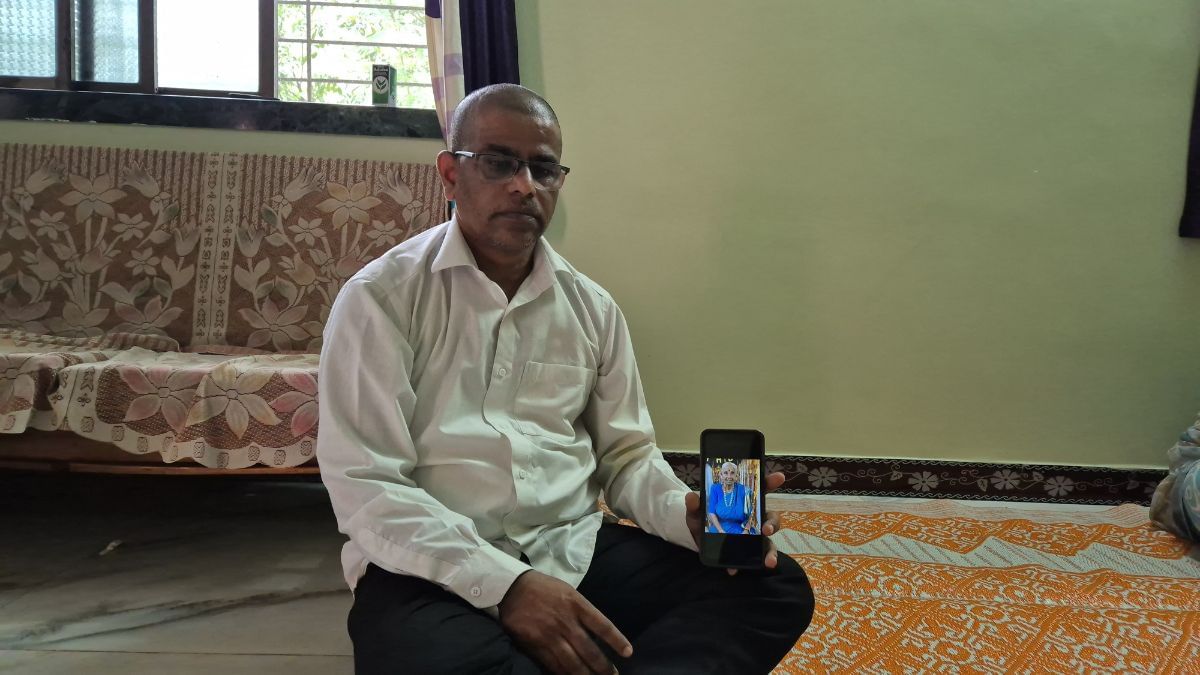
The family now sits and shows videos of the 77-year-old jovial lady, Chanda, dancing in community functions.
“She was so healthy, she never needed to visit the doctor even once,” Gowardhan said.
(Edited by Anurag Chaubey)



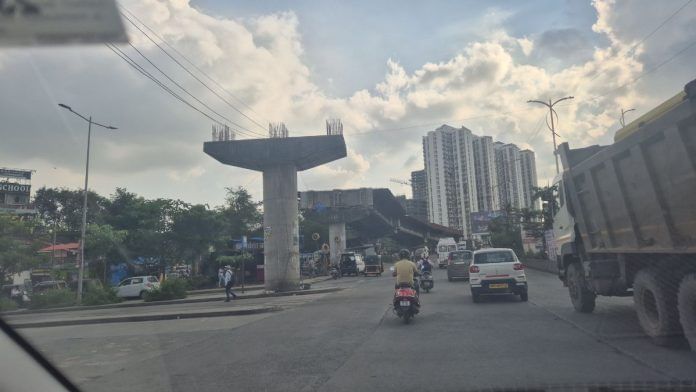



This is nonsense. The pace of so-called development is fast is more reason to have achieved perfection in infrastructure building and not what this low rate article says in the veru beginning.
“ From Bihar to Gujarat to Maharashtra, bridges are collapsing all over the country like they were made of Lego”. The comparison with Lego is incorrect. As someone who has been assembling Lego sets for 40 years, I can confidently state that Lego sets are extremely well-designed and can remain together for years, even decades, after assembly. They are often a marvel of engineering and sound design. Maybe our engineers can learn from Lego designers.
Thank you for this article. I live in Palava and have been suffering . Couple of other flyovers near Palava too have developed huge potholes within few months of inauguration.I also recently undertook a trip to Kanyakumari via NH66 and saw the pathetic condition of the roads.